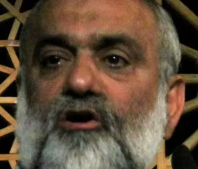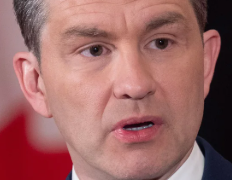November 9, 2024
For the first time in decades, the government has now ordered rolling cuts in the electricity supply in the cold months because of a shortage of sufficient natural gas supplies to keep power plants operating at capacity.
Citizens will see cuts of two hours a day during the daytime hours of 9 a.m. to 5 p.m.
` The cuts started November 10. The government said the cuts would continue “indefinitely.”
It said some provinces would not experience cuts, but it did not name them or explain why some provinces should be exempted while others experience daily cuts.
The government has cut power supplies in summer in recent years as the use of air conditioning has pushed demand for power over the supply. But it has been decades since winter power supplies have been cut. The revolution blamed the monarchy for the rolling cuts during wintertime in the 1970s and made the expansion of power supplies a priority after the revolution. And it has expanded output by almost 10 times since the revolution.
But once it “solved” the problem in the 1990s, the government failed to maintain the power system or significantly expand it while public usage of electricity soared year-after-year. Foreign sanctions have certainly been a factor in reducing government revenues that could have been used to produce more power. And sanctions have also made it harder for Iran to contract with foreign contractors that build power plants.
The government has also sunk billions of dollars in building the Bushehr nuclear power generating plant and is now sinking billions to build three additional nuclear power plants at Bushehr. That has drained funds that could have been used for cheaper conventional power plants. The one existing nuclear plant at Bushehr has a capacity of less than 1,000 megawatts or barely 1 percent of the national generating output of 60,000 megawatts. (Iran’s installed capacity is 95,000 megawatts, but it cannot reach that figure for many reasons.)
The need to schedule rolling power cuts has been exacerbated by the decision of President Pezeshkian to stop all use of mazut at three power plants in Arak, Karaj and Esfahan. Mazut is a cheap but highly polluting fuel that has long been used in the winter to keep power plants going. Pezeshkian’s spokeswoman said the president believed it would better for the public to suffer from power cuts than from increased air pollution.
Power plants normally use natural gas, but in the winter the priority is to supply homes with natural gas for heating, putting pressure on power plants and leading to the resort to mazut. Pezeshkian banned mazut at three power plants located in densely populated areas.
The power problem has also been exacerbated by a dispute with Turkmenistan, which normally provides natural gas in the cold months to northeastern Iran. Due to an ongoing dispute with Turkmenistan over payments, that country is not currently sending any natural gas to Iran.
Yet another problem is the ongoing drought, which means there is much less water in reservoirs behind hydroelectric dams. As a result, they cannot generate as much power as they were designed to produce.
Iran has the second largest natural gas reserves in the world. Only Russia has more. Despite sanctions, Iran has managed to develop the world’s largest gasfield, South Pars, in the Persian Gulf. It just recently completed the last phase of that development project. But the earliest phases, which came on steam in the 1990s, have now passed their prime and are producing less than in past years. Specialists have warned that without major new investments, the natural gas supply available to Iran has reached its maximum and will now decline each year.
The government has begun posting the schedules of blackouts on the websites of city and province electricity agencies so the public can know what hours they will lose power and plan accordingly.
One news report said there will be no power cuts within the municipality of Tehran, though cities and towns elsewhere in the province of Tehran would experience cuts. There was no explanation for that exemption, though many, of course, speculated that the regime feared the fury of politically active Tehranis if they experienced power cuts.
Much of the country has seen unseasonably cold weather this fall with snow falling on urban areas in Ardebil province earlier than usual. As of November 10, Tehran, however, has seen only nine nights where the lows have been below 50 degrees Fahrenheit. The lowest temperature so far in Tehran has been 43 degrees on October 25.























